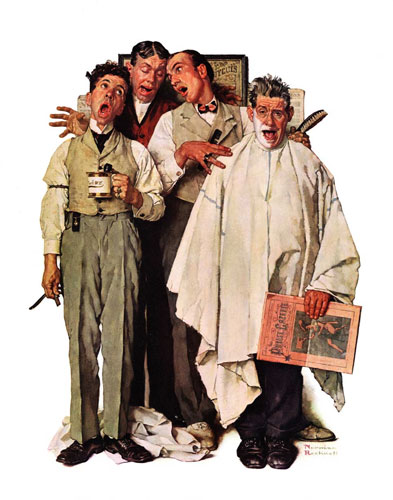Four voices of homogeneous gender in close voicing with the melody line sung below a tenor harmony, avoidance of dissonance and vibrato, and liberal use of dominant seventh chords define barbershop quartet singing.
This style of popular singing developed under the influence of German and Austrian harmonized folk song, blackface minstrelsy, and race relations in early 20th-century neo-Victorian America. The formation of the Society for the Preservation and Encouragement of Barber Shop Quartet Singing in America in 1938 formalized the style and its corresponding subculture, and its use by Walt Disney and Meredith Willson propagated it.
Contemporary barbershop singing turns this nostalgic vision into lived experience, as the old songs function as repositories of idealized social memory.
This according to Four parts, no waiting: A social history of American barbershop harmony by Gage Averill (New York: Oxford University Press, 2003; RILM Abstracts of Music Literature 2003-7333).
Today is Barbershop Music Appreciation Day! Above, Norman Rockwell’s classic take on the barbershop quartet; below, the International Quartet Championship finalists at the 2019 Barbershop Harmony Society’s annual convention.













